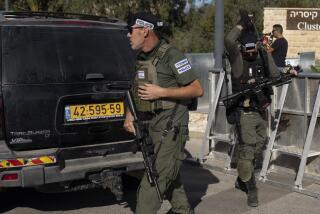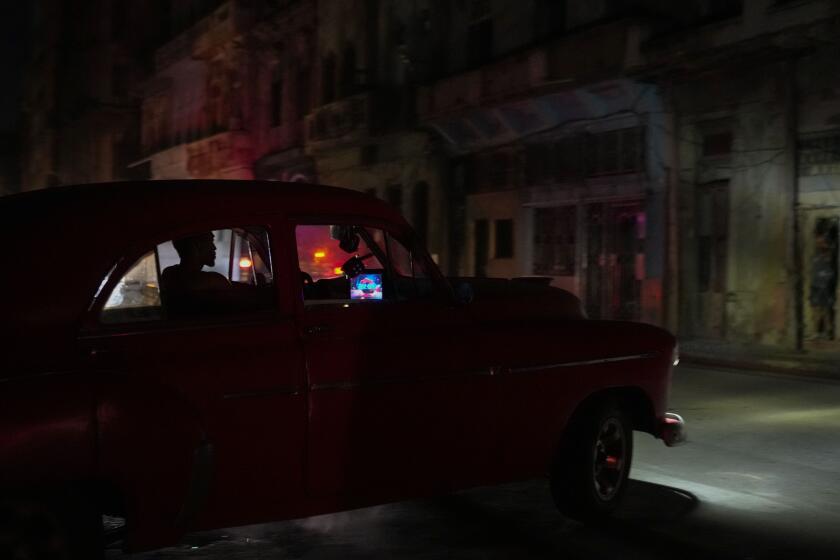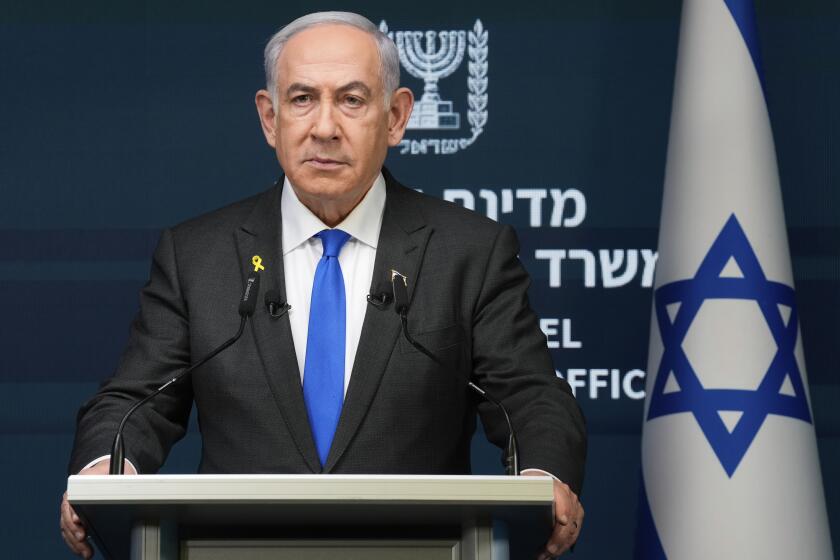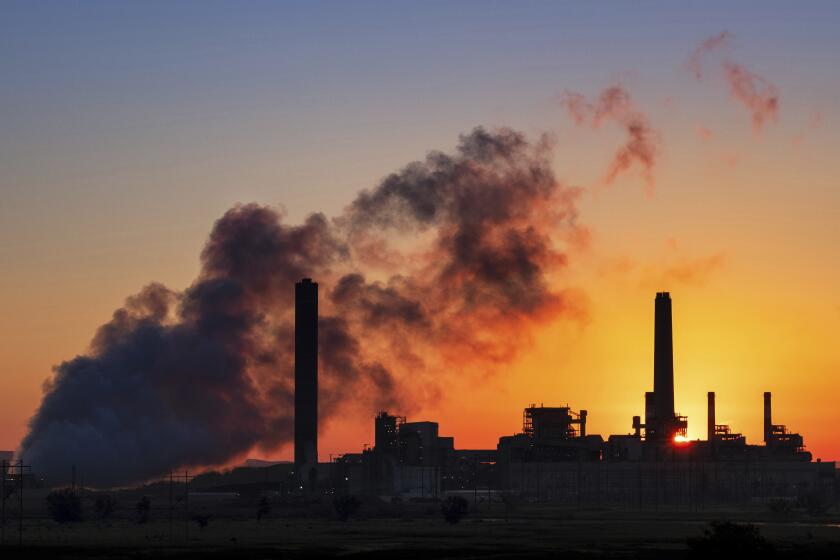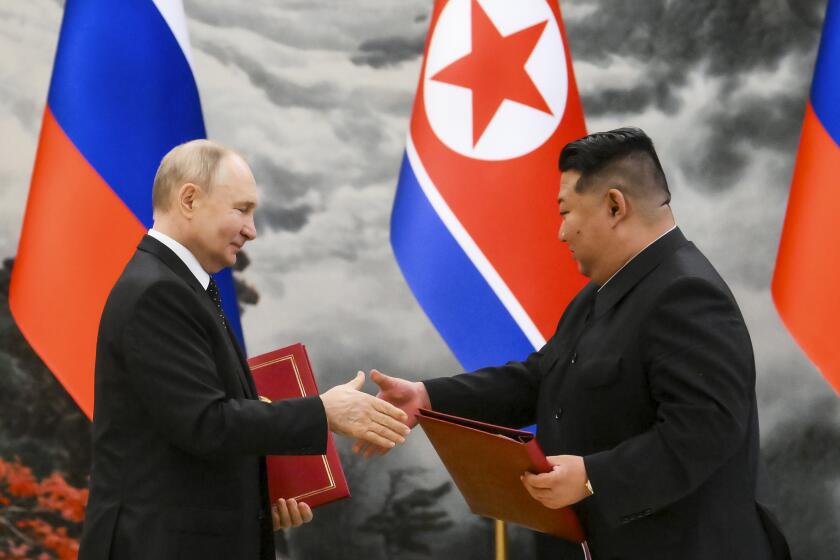Air Force Draws Back Veil on Secret Stealth Bomber : Flying Wing Rolled Out to Cheers
The Air Force unveiled its sinister-looking B-2 stealth bomber today, giving the world its first look at the gray-and-black flying wing designed to evade enemy radar and deliver nuclear weapons.
The bomber, which has never flown, was rolled slowly out of a hangar at Air Force Plant 42 in the Mojave Desert to cheers from an invitation-only crowd of 2,000 workers, military brass, media and industry representatives.
The B-2, built primarily by Northrop Corp., resembles a huge, tailless manta ray, with wide sweeping wings blending smoothly into rounded cockpit and engine housings on the top side.
At the rollout, nobody was allowed to view the B-2 from the rear, presumably because revealing the design of its engine exhaust system might help enemy detection efforts.
The rollout ceremony, conducted before a huge American flag, was in part a celebration of U.S. industrial ingenuity and in part, a bit of high-tech saber rattling.
Gen. Larry D. Welch, chief of staff of the Air Force, said the plane’s declared ability to slip through radar at all altitudes to deliver its payload of nuclear bombs represents a potent deterrent to those who would attack the United States.
“Its stealth capability will permit it to penetrate the most sophisticated air defenses and survive well into the 21st Century,” Welch said.
Nearly everything surrounding the program is a secret, including the cost of a B-2.
The General Accounting Office estimates the fleet of 132 stealth bombers the Air Force wants to assemble over the next several years could cost taxpayers $68 billion. That divides out to $500 million a copy.
The Air Force puts the total cost of the program at between $30 billion and $40 billion.
The stealth gets its name because it is designed to be extremely difficult to detect on enemy radar. That is achieved in a variety of ways: extensive use of exotic composite materials, some of which absorb rather than reflect radar waves; lack of sharp angles on the surface, and a cross section that offers a very small profile to radar.
The plane is a “flying wing,” a design resurrected from the 1940s that steers with flaps on the rear of the wings rather than with a tail. The B-2 displayed today was gray on top and black beneath.
Secretary of the Air Force Edward C. (Pete) Aldridge Jr. told the gathering that the program’s expense represents an investment in the nation’s safety.
“Let all of us remember America’s enduring hope and prayer that the B-2 will strengthen the cause of peace and that this magnificent aircraft will never be flown in anger,” Aldridge said.
Critics of the stealth program, including the private Union of Concerned Scientists, maintain that the B-2 deployment, planned for the early 1990s, would hamper arms control efforts by posing a greater threat than current planes to enemy command posts and mobile missiles.
The B-2 is described as an all-altitude penetration bomber, as opposed to the B-1 bomber, which is designed to penetrate enemy air defenses at low altitudes.
The Air Force says the plane is 69 feet long, about the length of an F-16 fighter plane, and has no tail. Its wingspan, at 172 feet, is almost as wide as the aging B-52 it is designed to replace.
Flight tests will begin, probably early next year, at Edwards Air Force Base, about 70 miles north of Los Angeles in the Mojave Desert. The Air Force said the maiden flight will be the short hop from the plant at Palmdale to Edwards.
The rollout followed by three weeks the Pentagon’s release of a photo of another closely held project, Lockheed Corp.’s stealth fighter, the F-117A. That plane has been flying since 1981 and was declared ready for wartime missions in 1983.
More to Read
Sign up for Essential California
The most important California stories and recommendations in your inbox every morning.
You may occasionally receive promotional content from the Los Angeles Times.
